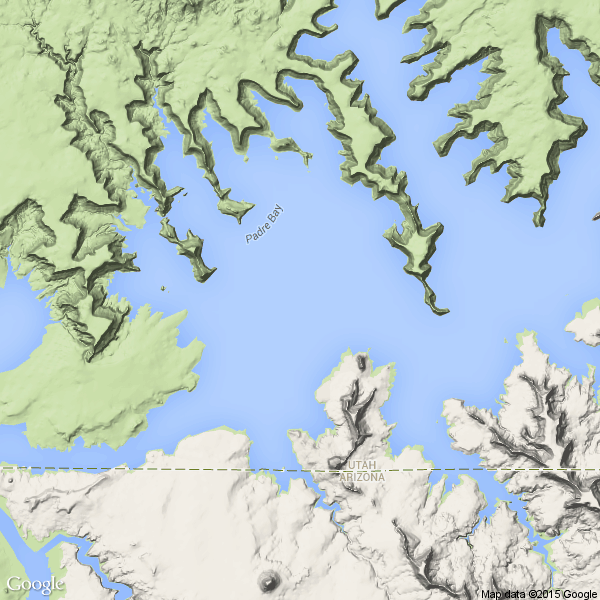Powell Lake and Reports

Thursday, June 17th, 1999
-
Water Temp: 65
Water Clarity: Stained (2-4 foot visibility)
Report: This is a test o the automatic report cgi
City: San JoseTips: lets hope it works.Fishing Reports or Almaden Reservoir
Date Unknown
-
Water Temp: 56
Water Clarity: Clear (4+ foot visibility)
Report: LAKE POWELL FISH REPORTApril 11, 2002 By Wayne Gustaveson Home Page: www.wayneswords.com Lake Elevation: 3647 Water Temperature: 56-64 F
City: Page, AZ -
Water Temp: 68-70
Water Clarity: Clear (4+ foot visibility)
Report: LAKE POWELL FISH REPORTOCTOBER 19, 2000 By Wayne Gustaveson Home Page: www.wayneswords.comLake Elevation: 3676 Water Temperature: 67-70 FReturn o stable weather has pushed back the ishing calendar. Conditions are now similar toevents beore recent storm ronts. Days are warm, nights are cool and ish are packing in thegroceries while they still can. The good news and bad is that ish are bunched up. Find the bunchand you
-
Water Temp: 77-80
Water Clarity: Clear (4+ foot visibility)
Report: LAKE POWELL FISH REPORTAugust 31, 2000 By Wayne Gustaveson Home Page: www.wayneswords.com Lake Elevation: 3680 Water Temperature: 77-80 FStripers are still hungry but shad numbers in open water are very small and decreasing daily. Boilsare becoming much less numerous. The best time to see a boil is rom mornings irst light until 8am. Big boils are past with single ish and small striper pods more common. Good boils mayhappen anywhere shad and stripers come together. The best chance to locate a boil is near CopperCanyon in the San Juan, White Canyon near Hite and within 5 miles o Wahweap Marina. Large striper catches are still very possible with a slight modiication in technique. Search or boilsin early morning light. When a single striper or small group is seen cast surace lures to the swirls. Then as soon as the stripers leave the surace use a jigging spoon or large (hal ounce or heavier)white marabou jig and thoroughly work the bottom and water column in the vicinity o the boil.Many more ish can be taken rom the bottom than the surace while stripers are still activelysearching or ood. The search mode lasts rom irst light to 9 or 10 am. When stripers enter their resting mode they can be seen on the graph as stacks or individual ish indeep water (40-70 eet). Resting ish can be started by chumming anchovy pieces and ishing cutanchovies near bottom. When a school starts to eed than the spoon can be used to catch ishquickly in short bursts. Trolling will take stripers, as well, but ish in this phase spend more time ontop and bottom and less time in the water column where trolled lures are eective. Fishing thesurace and bottom is more productive. .Smallmouth bass ollow the same activity patterns with surace eeding in the early morning, activesearching later in the day and deep rest periods at mid day. Use surace lures early, shallowrunning crank baits mid day and sot plastic grubs or the remainder o time. Smallmouth and green sun ish were very active rom God Hope to Hite early in the week, evenbiting with regularity during the windy periods. Sot plastic grubs worked well on rocky points,talus slopes and shoal areas. Bass were more likely to hit when the grub was close to the bottom,Fewer ish were seen chasing grubs in mid water this week than last. It was better to let the grubhit bottom, rest and then hop it along the bottom. My best success came by dropping a greensingle tail grub directly below the boat to the most productive habitat while driting with the windacross rocky points. Fish were airly shallow at 8-15 eet in Good Hope and White Canyon earlierthis week. Primary points were 10 times more productive than long rocky shorelines and coves. Catish were very active. Some were caught on sot plastic grubs while bass ishing. Walleyewere taken on jigging spoons while probing the bottom or resting stripers.
City: Page, AZ -
Water Temp: 67 - 70
Water Clarity: Clear (4+ foot visibility)
Report: Stripers are at the end o a ive year cycle where they have eliminated the bait ish (shad) and are starving. Catches are all small and skinny. Best site is Antelope Pt. intake station or power plant. Smallmouth bass bite is excellent. Hitting grubs, white, chartreuse, pumpkin, whatever. Also lizards and worms. Largemouth bass are in various stages o spawn, pre, post and doing it. Many seen on the nest. Best ishing is in "green" water, where visibility drops. At ends o canyons with water inlets, creeks, etc. Worst is in "muddy" waters. We caught smallmouth almost repeatedly, mostly throwbacks. Some keepers. Largest largemouth was 3.0 lbs., but action was good. Overall, Powell is excellent or ishing right now. Many large stringers o largemouth being taken and smallmouth up to 3.0 lbs. Stripers are small, around 2.0 lbs. and hard to come by. Reports o stripers being in the San Juan up by the big bay as well as "big" largemouths being taken up there. Weather has been hot.
City: Chula Vista, Cali.Tips: We used up a couple bags o white Yamamoto grubs, single tails. Also, chartreuse, pumpkin and watermelon grubs. Bass hit on a black 6" worm rigged Texas style. Best ishing or spawning and prespawn bass was a method called Inside Line, where you rig your lure to be weedless and toss it onto the bank. Let it sit there 30 seconds, then bring it slowly to the waters edge. Then reel as slow as you can into the water and retrieve it. S-L-O-W-L-Y. Bass protecting the nest will concentrate on the threat coming rom the bank and some ishermen were reporting as many as three bass attacking the lure simultaneously as it entered the water. TIP: I no hits within irst 5 eet, let the lure rest on the bottom or another 30 seconds. Then raise the rod tip slowly and retrieve slowly, letting the rod tip rise, then all.




 Advertising
Advertising